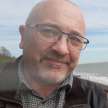The Philip Experiment
Unveiling the Power of Human Consciousness

Introduction
The Philip experiment, a pivotal moment in parapsychology, unfolded in Toronto, in 1972, under the guidance of Dr. A.R. George Owen and Dr. Joel Whitton. Its core objective was to unravel the unexplored territory of human interaction with the supernatural realm. By attempting to establish contact with Philip Aylesford, a character born from a concoction of historical fact and imaginative fiction, the experiment challenged conventional beliefs about the limitations of human consciousness.
Overview of the Philip Experiment
The Philip experiment was not just about conducting séances; it revolved around attempting to establish contact with Philip Aylesford, a character forged from a fascinating blend of historical fact and creative fiction. Philip portrayed as an aristocratic Englishman from the 1600s, was intricately woven into the tapestry of history, with ties to events like the English Civil War. Despite being a fabrication, Philip's narrative was meticulously crafted with deliberate contradictions and errors, challenging the participants' perception of reality and their ability to connect with a character purely born from their collective consciousness.
Purpose and Methodology
The essence of the experiment lay in deciphering whether human intent could bridge the gap between the real and the imaginary. The methodology was meticulous, creating an environment steeped in the lore of traditional séances. By immersing themselves in visualization exercises and collective meditations, the group aimed to create a conduit through which the ethereal character of Philip could be conjured.
Results and Findings
Amid the séances, inexplicable phenomena unfolded—vibrating tables, ethereal echoes, and mysterious movements within the room. Astonishingly, the group managed to engage in dialogue with the fabricated character, Philip. Their communication, albeit unconventional, was established through inexplicable table raps and other enigmatic manifestations. Similar experiments involving different fictional characters consistently yielded parallel results, underscoring the profound impact of human consciousness on paranormal interaction.
Impact on Paranormal Research
The Philip experiment was a seismic shift in the landscape of paranormal inquiry. It debunked archaic beliefs about the supernatural and ushered in a new era of understanding that emphasized the profound role of human consciousness in such encounters. This groundbreaking foray inspired a paradigm shift in paranormal research, triggering a wave of investigations into the power of human intent and belief.
Criticisms and Controversies
Despite its groundbreaking nature, the Philip experiment faced its share of scepticism. Critics pointed out the absence of stringent controls and the subjective nature of the results. They argued that participants' expectations and biases might have coloured their interpretations of the events. Additionally, the experiment's reliance on séances and group dynamics raised questions about the potential influence of suggestion and peer pressure on the participants' experiences.
Influence on Popular Culture
The impact of the Philip experiment extended beyond the confines of scientific research, leaving an indelible mark on popular culture. Films like 'The Apparition' and 'The Quiet Ones' drew inspiration from the experiment's theme, exploring the boundaries between reality and the supernatural. These cinematic interpretations highlighted society's enduring fascination with the unknown and its connection to the human psyche.
Comparison with Other Experiments
The Toronto Society for Psychical Research (TSPR), the architect behind the Philip experiment, replicated its conditions with other fictional characters like Lilith. The findings echoed the initial experiment's results, emphasizing the profound influence of human belief and intention on psychokinetic phenomena. This consistency across different experiments reinforced the idea that the phenomenon observed was not limited to a specific character but rather a manifestation of the participants' collective consciousness.
Personal Experiences and Beliefs
Individual encounters with the unexplained contribute to the rich tapestry of beliefs and perceptions. While scientific explanations attempt to decode the mysteries, personal experiences—ranging from apparitions to unexplained energies—provide a unique lens through which the paranormal realm is perceived. These personal encounters, often dismissed in scientific discourse, play a crucial role in expanding our understanding of the enigmatic.
Conclusion
Beyond its scientific implications, the Philip experiment had a transformative impact on the participants. It bolstered their unity and self-assurance, revealing the therapeutic potential of exploring the unknown. Moreover, it redefined the boundaries of scientific inquiry, illustrating the potential of human consciousness to transcend the conventional limitations of reality.
About the Creator
Richard Clements
Unearthing the Mysteries of History, Crime, and the Unknown
Delve into the captivating world of history, crime, and mystery through factual writing. Explore the past, unravel human behavior, and solve enigmas.
Enjoyed the story? Support the Creator.
Subscribe for free to receive all their stories in your feed. You could also pledge your support or give them a one-off tip, letting them know you appreciate their work.






Comments
There are no comments for this story
Be the first to respond and start the conversation.